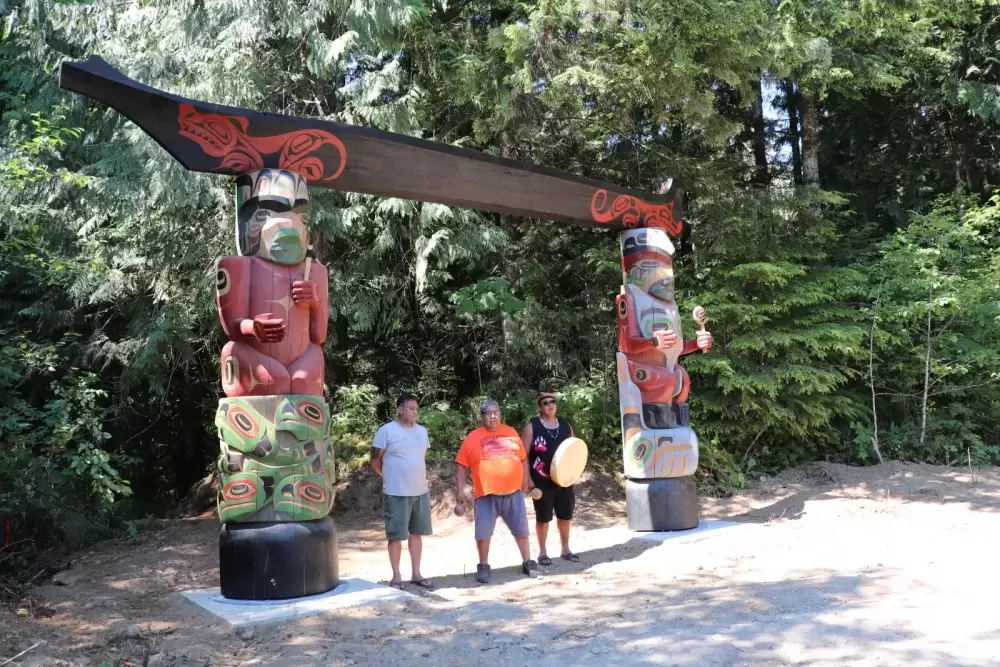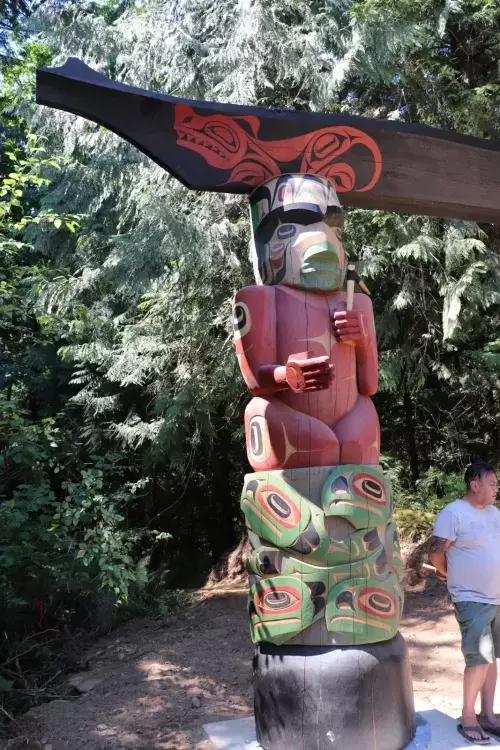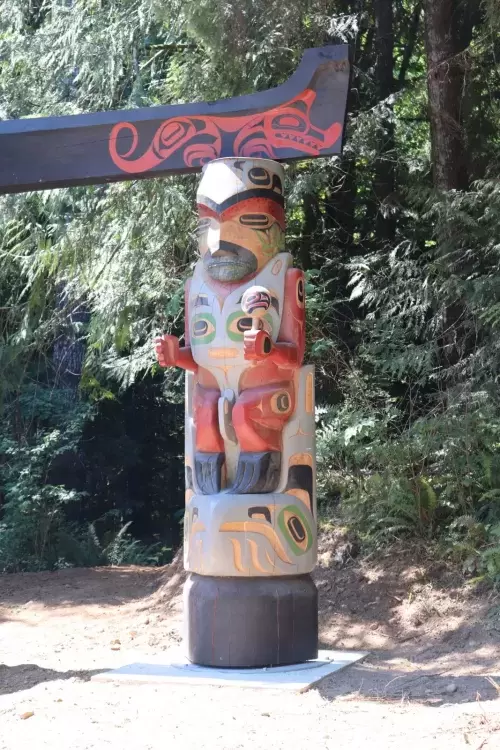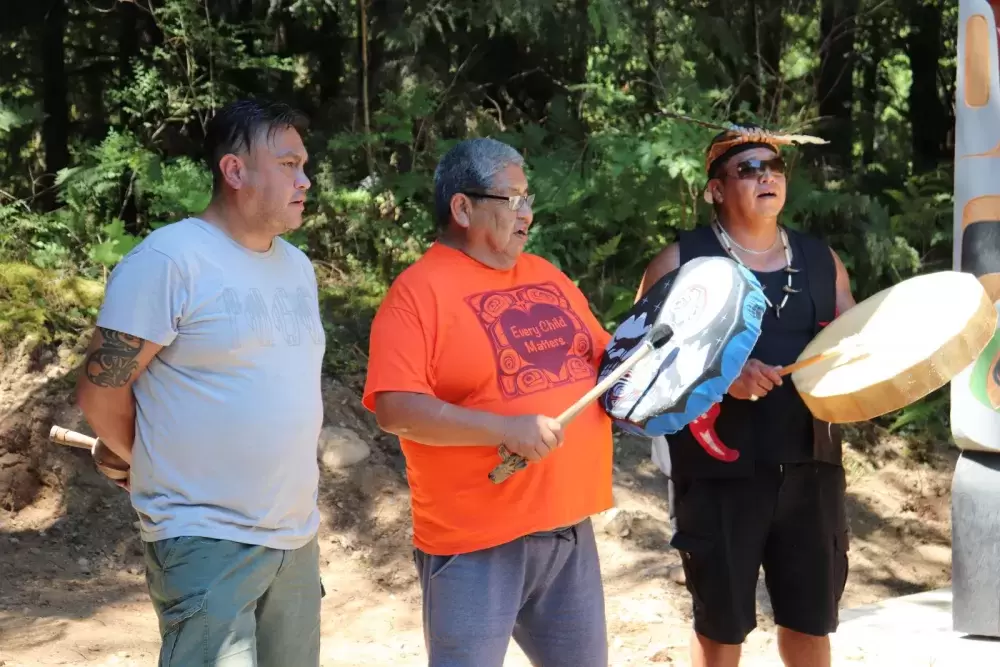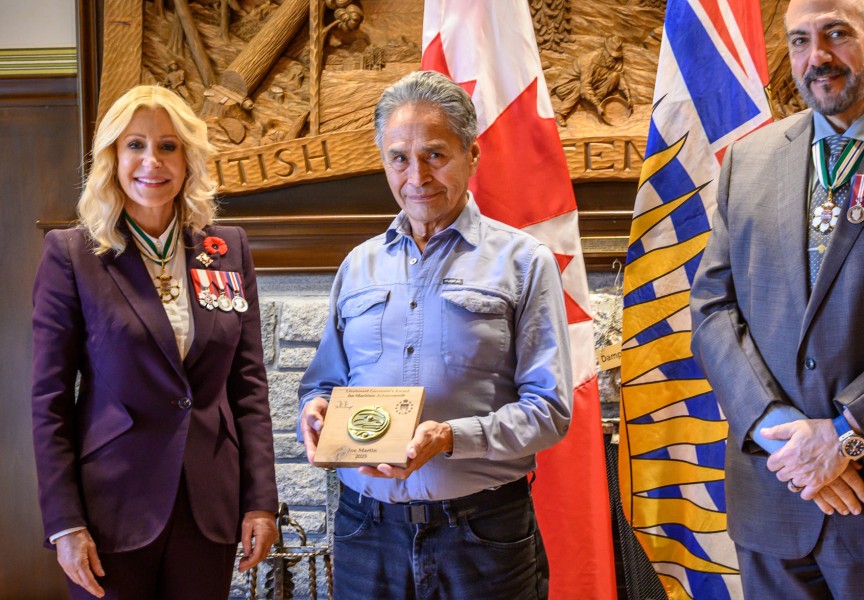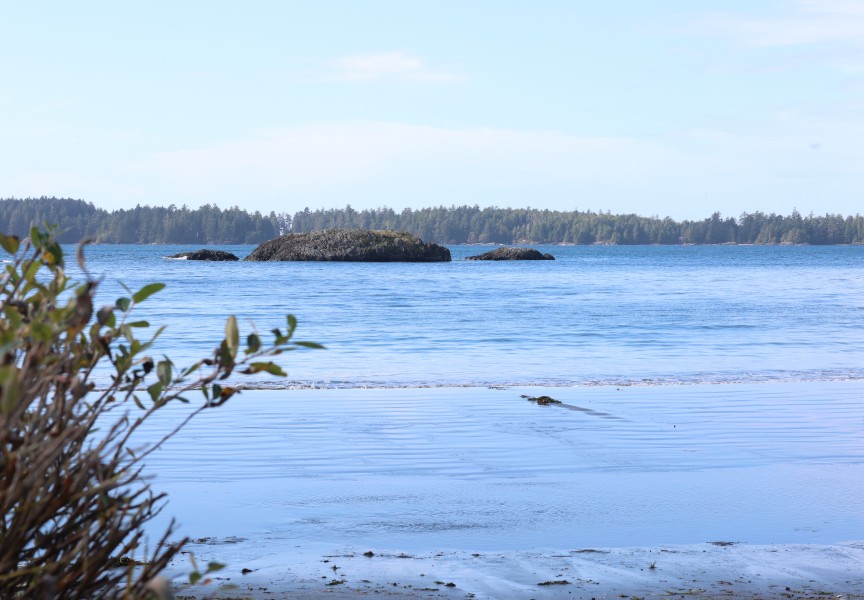World renowned artist Art Thompson was honored in his home territory June 28, 18 years after he lost his battle to cancer. A carving project, three years in the making, came to a finish with a solemn ceremony under sweltering summer skies.
In 2018, staff of the Ditidaht Community School along with former elected chief Jack Thompson came up with an idea that would not only commemorate Art Thompson, but would also serve as a learning opportunity for the children.
The school had built a trail leading from the edge of the village to the shores of Nitinaht Lake. A stunning, new carved gateway was made to grace the entrance to the trail.
Designed by Morris (Moy) Sutherland Jr., the pole features two carved figures supporting a canoe that extends across the tops of the poles.
For Moy, this project was especially important for him to complete, even after delays caused by the pandemic. More than 20 years ago Moy began his artistic apprenticeship under Art Thompson.
“He was my teacher and mentor for the last three years of his life,” Moy told the crowd, adding that it was a great honor to make this contribution to the community and to the children.
Thompson was born in Whyac, near Nitinaht Narrows in 1943. From an early age he was exposed to institutions that stifled his Indigenous ways, first at the tuberculosis hospital in Nanaimo and then at Alberni Indian Residential School, where he suffered horrific abuse at the hands of supervisor Arthur Plint.
In 1995 Thompson testified in court against Plint, who subsequently pled guilty to sexually assaulting 18 victims between the ages of 6 and 13.
By that time, Thompson had found healing in artistry and his work was in demand around the world. He designed two of the medals used in the 1994 Commonwealth Games and also the Queen’s baton.
He remained a staunch supporter and advocate for residential school survivors until his passing in 2003.
“This is the best way and the best place to honour my teacher,” said Sutherland.
The new installation sits at the head of the new trail leading to Nitinaht lake. There are two figures, one holding a rattle.
“This is a whaler above a humpback whale,” said Sutherland. He went on to say the design was inspired by an Art Thompson installation at Camosun College.
The second figure is a Ditidaht fisherman standing in a river filled with salmon.
“This represents the wealth of the Ditidaht,” said Sutherland.
A Nuu-chah-nulth-style canoe is balanced on top of the two poles, forming a gateway.
“We are honoring a man and respecting the wealth you have in your waters…that is what is represented in these poles,” said Tim Sutherland.
Sutherland said he named the pole Tsa-qwa-supp. That was Thompson’s name and the family has given permission to use it for the pole.
“Before he died, he had a potlatch and gave away all his names,” said Sutherland. Tsa-qwa-supp is the only name he kept.
Moy Sutherland Jr. (Hiishmiik), was accompanied by his uncle Tim Sutherland, who led the singing, along with Guy Louie Jr., who helped with both carving and singing.
John Marston (Qap'u'luq) of Stz'uminus First Nation was there and also took part in the project.
Following a blessing ceremony, Marston thanked the people of Ditidaht and the Thompson family for their support.
DCS principal Emily MacLennan thanked Sutherland and Marston for working with the kids as they helped carve one of the poles. The original plan was to have most of the work done in the village with community members helping along the way, but the pandemic changed things and the work was completed off site.
Sutherland said initial funding for the project came from Ditidaht First Nation, then an anonymous donor contributed the rest to complete the work. DFN supplied the footings and built the bases for the poles.

